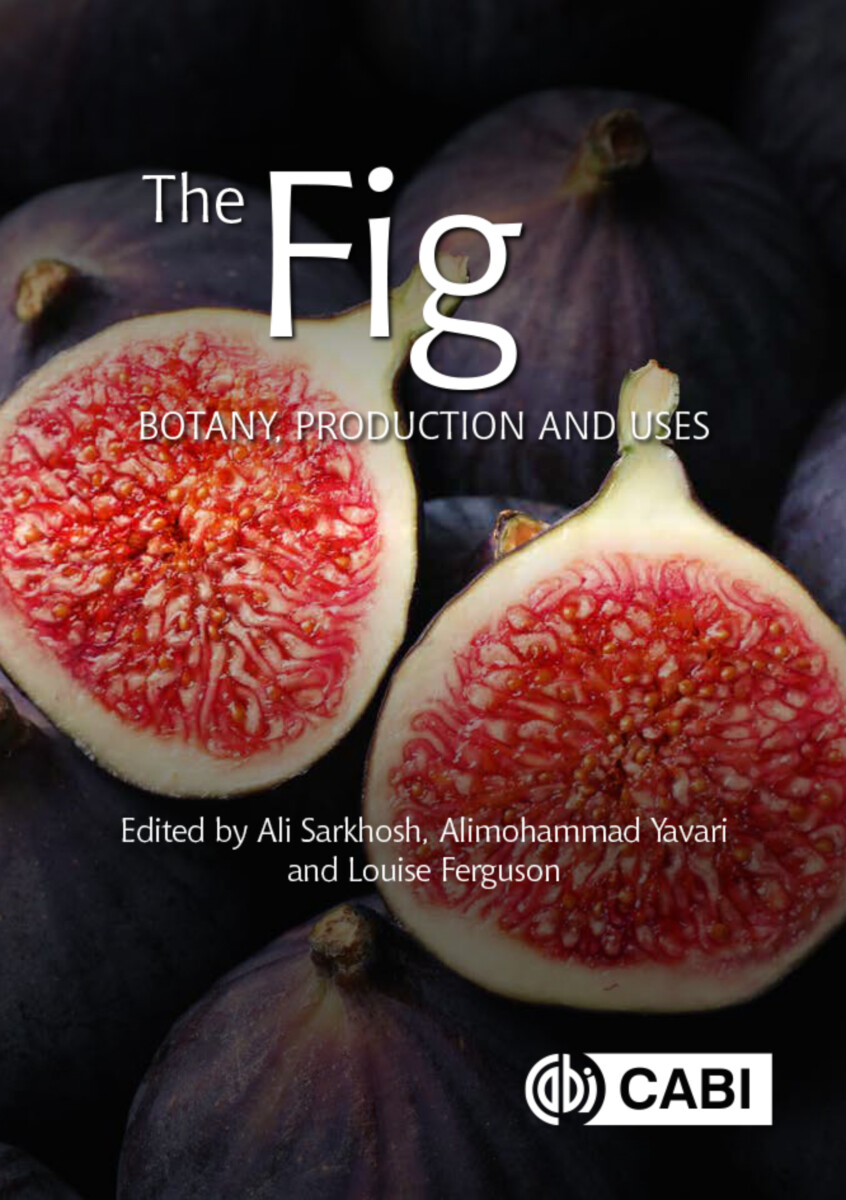- Publisher
CABI - Published
4th May 2022 - ISBN 9781789242881
- Language English
- Pages 512 pp.
- Size 6" x 9"
The common fig Ficus carica L. is an ancient fruit native to the Mediterranean. Dried figs have been successfully produced and processed in arid regions with little sophisticated infrastructure for centuries. Figs are rich in fibre, trace minerals, polyphenols and vitamins, with higher nutrient levels than most fruits.
Advances in agricultural production and postharvest technologies have not only improved the efficiency of dried fig production but have facilitated the development of both local and export high value fresh fig industries. The result is high quality fresh figs marketed internationally throughout the year.
This book provides a comprehensive summary of fig growing, processing and marketing from a scientific and horticultural perspective. The nineteen chapters include in-depth discussions of:
- History
- Physiology
- Breeding and Cultivars
- Propagation
- Site Selection and Orchard Establishment
- Nutrition and Irrigation Management
- Pollination Management
- Integrated Pest Management
- Greenhouse Production
- Harvesting, Dried and Fresh Fig Processing
- The Medicinal Uses of Figs
- World Fig Markets
1: History, Archaeology and Culture
2: Taxonomy, Botany and Physiology
3: Production and Growing Regions
4: Biodiversity, Germplasm Resources and Breeding Methods
5: Fig World Cultivars
6: Propagation Techniques and Nursery Management
7: Environmental Requirements and Site Selection
8: Orchard Establishment Tree Management
9: Fig Wasps and Pollination
10: Soil and Nutritional Requirements
11: Irrigation and Water Requirements
12: Fungal, Bacterial, and Nematodes Problems in Figs
13: Fig Viruses, Viroids and Phytoplasmas
14: Arthropod Pests of Fig and Their Management
15: Fruit Maturity, Harvest Methods and Technologies
16: Postharvest Physiology and Physiological Disorders of Fresh Fig Fruits
17: Processing and Industrialization
18: Fig and Health
19: World Fig Market
Ali Sarkhosh
Ali Sarkhosh is currently serving as Assistant Professor and Extension Specialist (fruit crops) in the Horticultural Sciences Department at the University of Florida. Dr. Sarkhosh was born and raised in a farming family, who grew pomegranate and saffron for four generations in Iran. He did his Master thesis and Ph.D. dissertation in pomegranate genetic diversity and breeding under supervision of Professor Zamani (one of the editors in this book) at the University of Tehran in Iran. Dr. Sarkhosh worked as pomegranate expert in Australia for four years where he was responsible for all management aspects of 600 acres of pomegranate production. Toward improving pomegranate production, he published many sources of both technical and referred articles in pomegranate breeding and genetic diversity, postharvest, and production. Dr Sarkhosh has over 10 years of experience with commercial fruit production in U.S., Australia, New Zealand, and Iran. His research with tree fruits has focused on breeding, rootstocks and cultivars evaluations, and assessment of cultural practices to optimize yield and production efficiency.
Alimohammad Yavari
Alimohammad Yavari is currently serving as a private pomologist and consultant. Mr. Yavari received his M.S. in horticulture (Pomology) from the University of Urmia, Iran. He worked as research assistant at one of the biggest pomegranate collections and germplasms in the world located in Yazd (a city in central Iran). Mr. Yavari has excellent expertise in all aspects of pomegranate production as well as interacting worldwide with commercial growers and researchers in the field of fruit production, mainly tropical and subtropical fruits. His experiences in pomegranate production are mostly related to harvesting and exporting issues, and training courses for orchardists. He provides public and private sectors with designing projects and writing proposals related to pomegranate production and other tropical and subtropical fruits.
Louise Ferguson
Dr. Louise Ferguson’s research interests and expertise lie in general production physiology of pistachios, olives, citrus, figs, persimmons, and pomegranates with primary focus on basic and applied research in growth, phenology, and salinity tolerance of pistachios, evaporative mechanical harvesting of young pistachios, mechanical pruning and harvesting of table olives, including abscission agents, and effect of mulching and irrigation practices on citrus mandarin production.
Dr. Ferguson is President-Elect of the American Society for Horticultural Science (2019), and she is also acclaimed for agricultural development work in Afghanistan, Egypt, Iraq and Pakistan. She works with Cooperative Extension farm advisors and growers throughout California to establish research and outreach programs that support the fruit and nut industry.


